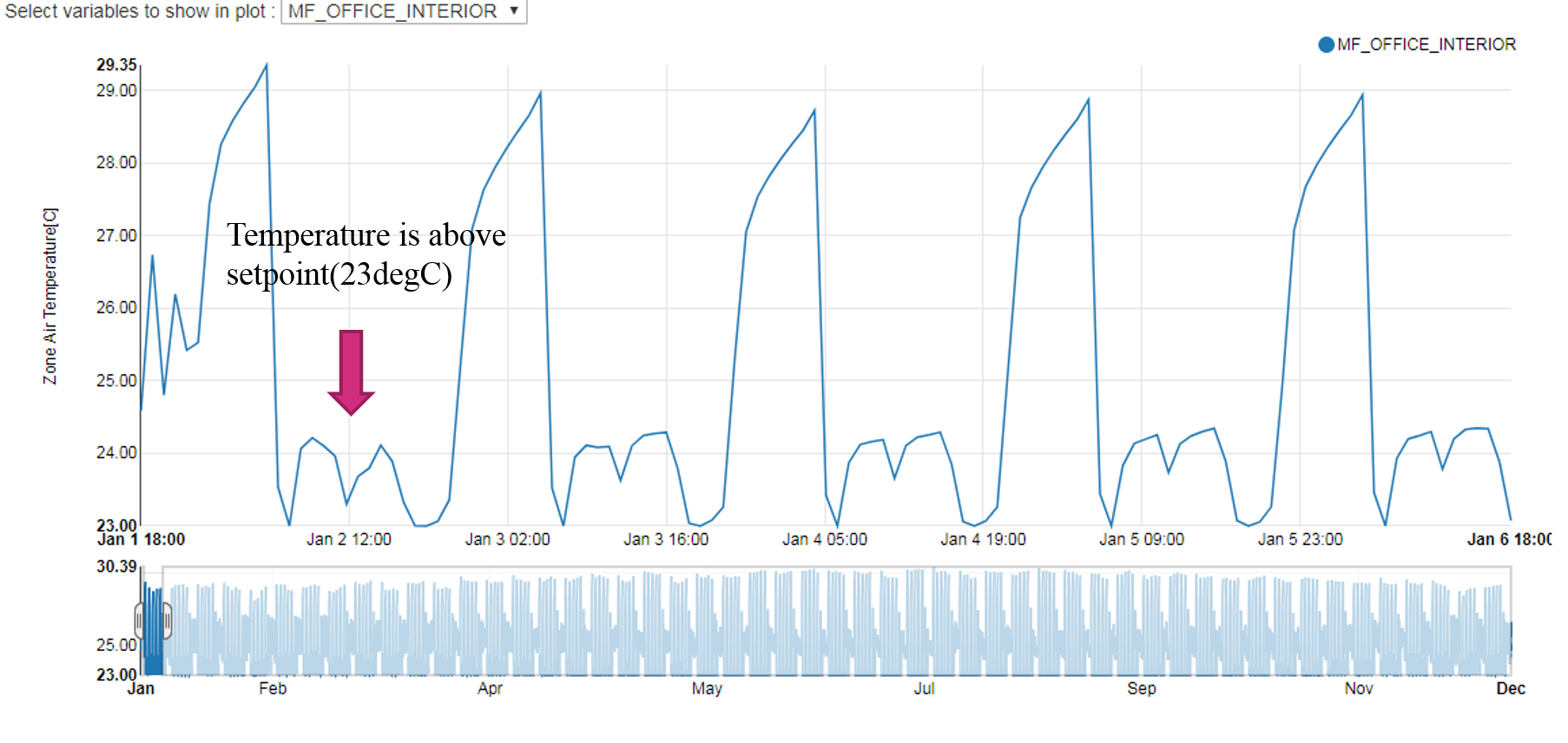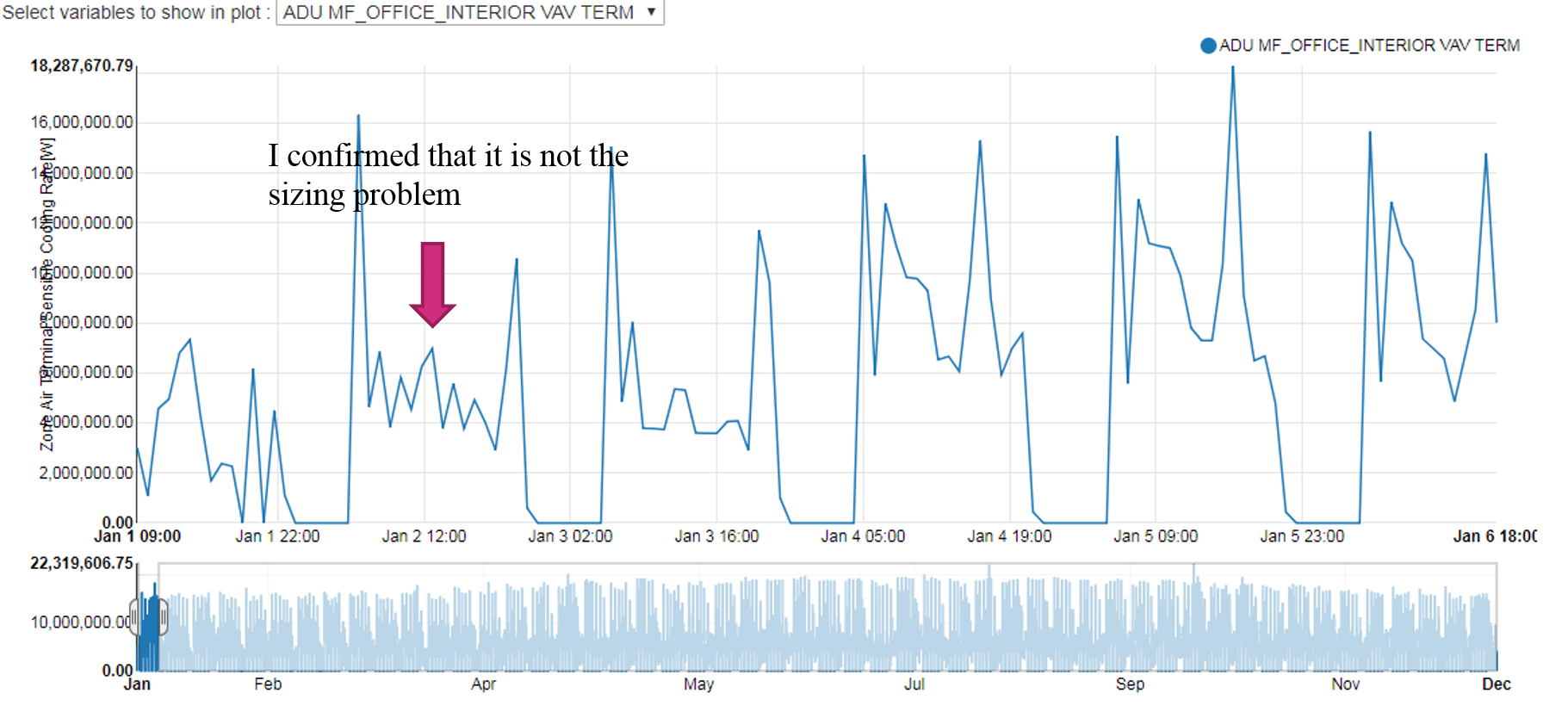What could be the reason why terminal unit reduce cooling even though the zone cannot meet setpoint?
I have baseline model for LEED v4 (system7) using the openStudio measure based on the proposed model.
The problem is that I get unmet hour around 2000 hours for cooling and looking at the data, I cannot understand the logic why it operate in this way.
Image above is Zone Air Temperature and image below is Zone Air Terminal Sensible Cooling Rate for first one week in January. In daytime, cooling rate reduce even though setpoint temperature cannot satisfy the setpoint as pointed out below. Does anyone have idea what could cause this problem other than sizing?









As a trial, when I increased Cooling Sizing Factor in Sizing:Parameter from 1.15 to 1.5 and 2.0, unmet hour decreased to 679,248 hours respectively.